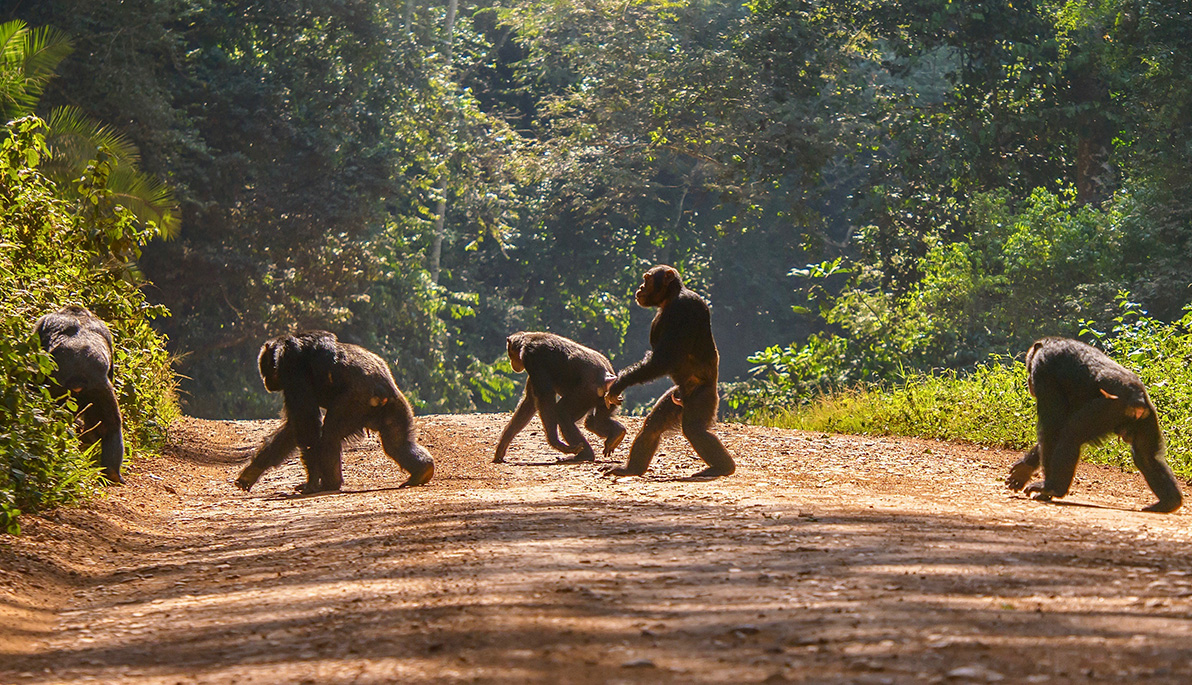News
Study: Chimps Outstep Humans
September 1, 2021
Scientists have believed for decades that humans evolved with the longest stride of any primate, allowing us to maximize our efficiency. However, new research published August 19 in The Journal of Experimental Biology by Nathan Thompson, Ph.D., associate professor of anatomy at the College of Osteopathic Medicine (NYITCOM), suggests that human strides are considerably shorter than that of our nearest species—chimpanzees.
The ability to walk bipedally (on two legs) is a critical step in human evolution, and it’s what differentiated us from chimpanzees, who walk on two legs, as well as four if using their hands to knuckle walk. Because humans have had approximately seven million years to experiment with walking on two legs, one would think they should have much longer strides, but according to Thompson’s latest findings, that is not the case.
“There’s this idea that humans have always been under selective pressure to get longer stride length through human evolution, and this [idea] kind of makes sense for something walking on two legs. If you have a longer step and a longer stride, then you’ll cover large distances faster and more efficiently than you would if you had a short stretch. One of the things that our team has discovered in working with chimpanzees is that this actually isn’t the case. Humans, for their size, actually have about 25 percent shorter strides than chimpanzees do when they walk bipedally,” said Thompson in an earlier interview with BBC News.
In order to achieve their longer stride, chimpanzees and other great apes swivel their hips three to four times more than humans. Anatomically, humans could do the same. In fact, the hip rotation of chimpanzees is similar to that of an Olympic race walker. However, Thompson believes that larger pelvic rotations might make it more challenging for humans to balance and that compensating for that instability requires more energy, offsetting the benefits of having a longer stride.
Reflective markers were placed on the leg joints of 10 humans, whose strides were documented through motion capture technology as they walked on a treadmill. This data was then compared with existing studies and the treadmill movement of two chimpanzees. The research team also included researchers from Stony Brook University and Midwestern University.





